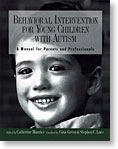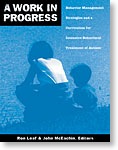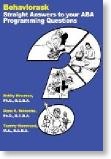safety
Autism & Wandering: Common Sense Solutions
15/10/12 12:13 Filed in: autism | Asperger's Syndrome
Fears about children with autism wandering off have kept many a parent awake at night. When you have a child who wanders, or in some cases i
The issue that keeps almost all of us awake is when our child is in the care of the school. Unfortunately, most children with autism in typical classrooms do not have locked, fenced school yards and enough supervision to keep these integrated children safe. The schools are very quick to defend their purportedly safe environments even when a parent sees all the gaping holes in security around the school. If the parent gets too pushy, the school bureaucracy often defends their lackadaisical stance and becomes aggressive with parents, possibly invoking the nuclear option by saying: “if this school is not secure enough for your little Johnny, then perhaps we need to reevaluate whether your child should be integrated.” Since so many parents are fighting for mainstreaming, this ends the discussion immediately and is one of the major motivations to get “lawyered up.” Some parents just give up and accept segregation due to the safety concerns.
Since the parent cannot rely on the school to protect the physical safety or their child, the next fight is to require one-on-one supervision in the school yard. The school then typically deploys the “buddy” system where they get older children to “supervise” the autistic child even in elementary school!
I came across an article by Amy Daniels, Ph.D., an Autism Speaks health policy researcher, who gives an in-depth analysis of autism and wandering. At the end of the article she says: “The time to develop solutions is now.” I couldn’t agree with her more.
Here’s my solution. Every school yard needs to be 100% secured with high fences and no way to get in or out from the school compound. All exits from the school need to be monitored every day, all day.
With the number of children afflicted with autism growing, every school will have to be secured. Not only will this help children with autism, it will also help all children remain safe and give every parent a better night’s sleep.
t may be more accurate to say is an “escape artist,” as long as the child is in your care you can create a safe environment with locks on windows and doors and alarms that sound any time someone opens a window or door. Thousands of parents have created the equivalent of Fort Knox in their home and have trained everyone in the child’s orbit to ensure that the child does not leave. Parents are generally vigilant and the child is safe. Some parents have even elected to have a tracking system on their child as a last resort.The issue that keeps almost all of us awake is when our child is in the care of the school. Unfortunately, most children with autism in typical classrooms do not have locked, fenced school yards and enough supervision to keep these integrated children safe. The schools are very quick to defend their purportedly safe environments even when a parent sees all the gaping holes in security around the school. If the parent gets too pushy, the school bureaucracy often defends their lackadaisical stance and becomes aggressive with parents, possibly invoking the nuclear option by saying: “if this school is not secure enough for your little Johnny, then perhaps we need to reevaluate whether your child should be integrated.” Since so many parents are fighting for mainstreaming, this ends the discussion immediately and is one of the major motivations to get “lawyered up.” Some parents just give up and accept segregation due to the safety concerns.
Since the parent cannot rely on the school to protect the physical safety or their child, the next fight is to require one-on-one supervision in the school yard. The school then typically deploys the “buddy” system where they get older children to “supervise” the autistic child even in elementary school!
I came across an article by Amy Daniels, Ph.D., an Autism Speaks health policy researcher, who gives an in-depth analysis of autism and wandering. At the end of the article she says: “The time to develop solutions is now.” I couldn’t agree with her more.
Here’s my solution. Every school yard needs to be 100% secured with high fences and no way to get in or out from the school compound. All exits from the school need to be monitored every day, all day.
With the number of children afflicted with autism growing, every school will have to be secured. Not only will this help children with autism, it will also help all children remain safe and give every parent a better night’s sleep.
Trust, but verify
27/04/12 10:46 Filed in: autism
President Ronald Reagan had a Russian proverb he liked to use when discussing relations with the Soviet Union: “Trust but verify.” I would suggest this philosophy should also apply regarding anyone in a position of authority over vulnerable children with special needs -- particularly autism. We need systems of verification to ensure against malfeasance, rather than only trust that people will always do the right thing when charged with responsibility over an autistic child. The disgusting revelation regarding what recently happened to a child with autism in a segregated classroom is a case in point.
Here’s the update.
A ten year old child was bullied by his special needs teachers in a classroom that was designed to teach children with autism! This behavior was uncovered by a smart father who wired his child with a recording device and thereby discovered the horrendous daily torment his child was experiencing. The father, Stuart Chaifetz, created a video and posted it on youtube to expose the disgusting practice which occurred in the Cherry Hill School District in New Jersey.
Chaifetz, is attempting to clean up the school district and rightly so! His goal is to pass legislation that requires teachers to be fired immediately upon discovery of bullying behavior. He has a petition that he’d like people to sign.
I’d like to suggest that this does not go far enough. What is required in my view, is systemic change. The failure here is not about people, but rather, about a system where there are no checks and safeguards to protect disabled children.
There is one solution that is quite straightforward. Parents need to have a choice regarding whether they would like their child in a special needs classroom that has constant video surveillance. Those parents who choose this type of classroom for their children will never have to worry again. There are those who would argue that teachers’ rights are infringed upon due to this type of surveillance. In a contest of competing rights, it’s obvious the child’s rights must always trump the rights of the worker.
Until there is a 100% reliable way to verify that children with special needs are being treated properly, regrettably this type of abuse will continue. We need good systems, not good intentions!
If you’d like more detail about this horrendous incident, here is the video created by Stuart Chaifetz, the child’s father.
Here’s the update.
A ten year old child was bullied by his special needs teachers in a classroom that was designed to teach children with autism! This behavior was uncovered by a smart father who wired his child with a recording device and thereby discovered the horrendous daily torment his child was experiencing. The father, Stuart Chaifetz, created a video and posted it on youtube to expose the disgusting practice which occurred in the Cherry Hill School District in New Jersey.
Chaifetz, is attempting to clean up the school district and rightly so! His goal is to pass legislation that requires teachers to be fired immediately upon discovery of bullying behavior. He has a petition that he’d like people to sign.
I’d like to suggest that this does not go far enough. What is required in my view, is systemic change. The failure here is not about people, but rather, about a system where there are no checks and safeguards to protect disabled children.
There is one solution that is quite straightforward. Parents need to have a choice regarding whether they would like their child in a special needs classroom that has constant video surveillance. Those parents who choose this type of classroom for their children will never have to worry again. There are those who would argue that teachers’ rights are infringed upon due to this type of surveillance. In a contest of competing rights, it’s obvious the child’s rights must always trump the rights of the worker.
Until there is a 100% reliable way to verify that children with special needs are being treated properly, regrettably this type of abuse will continue. We need good systems, not good intentions!
If you’d like more detail about this horrendous incident, here is the video created by Stuart Chaifetz, the child’s father.
A dog sees only in black and white, but WE can see a rainbow of possibilities
04/11/11 11:32 Filed in: autism | Asperger's Syndrome

If the family deploys the service dog wisely, and the service dog is able to go “under cover” and simply look to the outside world as the family dog, that dog can become a social lubricant to the community on the street and with other kids and parents in the park. Dog owners are repeatedly stopped and asked about their dog when out on a walk. The dog gives the child opportunities to answer questions and to engage in conversation. What’s great about this conversation is that the child can be taught to answer the various questions that are generally asked again and again. In short, the dog can help to de-stigmatize the child and his family, and the family becomes recast in the neighborhood as the nice family with the great dog, rather than perhaps that stressed out family with the special needs kid. Once there is a dog in the mix, the family is far more approachable and the child carries a new label: dog lover or dog owner.
There is a big world out there of dog lovers, and they recognize each other. You are either a member of the “dog lover’s club” or not. The beauty of a service dog is that, to the uninitiated, the dog just looks very well bred, with a great disposition, rather than professionally trained. In addition, part of the training of a service dog can be simple tricks which act like a magnet in the park to bring children to interact with the child! Then the child with autism becomes the kid who is great at teaching the dog to perform on command. Competence replaces disability. Service dogs can certainly perform an important safety role for persons with disability, but for kids with autism, the dog’s service can extend to social normalization and community integration, for the child and family. That’s important too!
Maxwell Smart had a phone in his shoe...
25/10/11 12:40 Filed in: autism | Asperger's Syndrome
What was parody of technology in the 1960s, is now reality. I recently came across a great new idea developed to track people with Alzheimer’s to make sure that if they should go missing, they can be located quickly. GTXCORP has developed a miniaturized 2 way GPS tracking system that fits into people’s shoes! Read more...
Don't Let Common Sense Wander
24/09/11 12:33 Filed in: autism | Asperger's Syndrome
I recently came across yet another news account about a child with autism that wandered off; luckily this child was found alive and safe! Seemingly every week we hear the same story, simply in a different location. Read more...
Child safety & autism: IBS in the making...
10/08/11 11:14 Filed in: autism | Asperger's Syndrome
I read with interest the article about training law enforcement, first responders and fire fighters to handle autism, and I agree that it is a great idea.
Safety issues are what give parents of children with autism the feeling that autism is a chronic crisis. But wait a minute... you can’t have a chronic crisis, can you? Read more...
Safety issues are what give parents of children with autism the feeling that autism is a chronic crisis. But wait a minute... you can’t have a chronic crisis, can you? Read more...
















